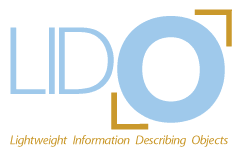LIDO’s background
LIDO – Lightweight Information Describing Objects Version 1.0 was delivered to the community during the ICOM/CIDOC conference in November 2010 in Shanghai/China. LIDO v1.1 was released in December 2021.
Its definition in an XML schema, together with the specification document, can be found here.
LIDO is the result of a collaborative effort of international stakeholders in the museum sector, starting in 2008, to create a common solution for contributing cultural heritage content to portals and other repositories of aggregated resources. Being an application of the CIDOC Conceptual Reference Model (CRM) it provides an explicit format to deliver museum’s object information in a standardized way.
Work that eventually led to LIDO started with the J. Paul Getty Trust and ARTstor developing CDWA Lite, an XML schema for describing cultural materials and their visual surrogates, to provide an easier and more sustainable model for contributing to union resources. It advanced with the Working Group Data Exchange of the German Museum Association’s development of museumdat. Its main achievement was to generalize the scope to include the full range of object data, such as cultural history, natural history, or history of technology, and to include multilingual needs.
Led by the CDWA Lite Advisory Committee and the Documentation Committee of the German Museums Association, it was agreed to create a single schema that met the requirements articulated by CDWA Lite, museumdat, and feedback received from the greater community of information and technology professionals. As part of this effort, compliance with CIDOC-CRM was a major requirement. A working group was established for the development of LIDO.
Resulting from the report on existing standards applied in European museums, it was concluded, within the ATHENA project, that a metadata format for ATHENA would have to meet the needs of both museumdat and SPECTRUM. Consequently, ATHENA decided to join the LIDO initiative and support further development that would subsequently integrate SPECTRUM requirements into the LIDO schema.
